Tory Burch
saw a gap in the market and turned it into a $2 billion business.
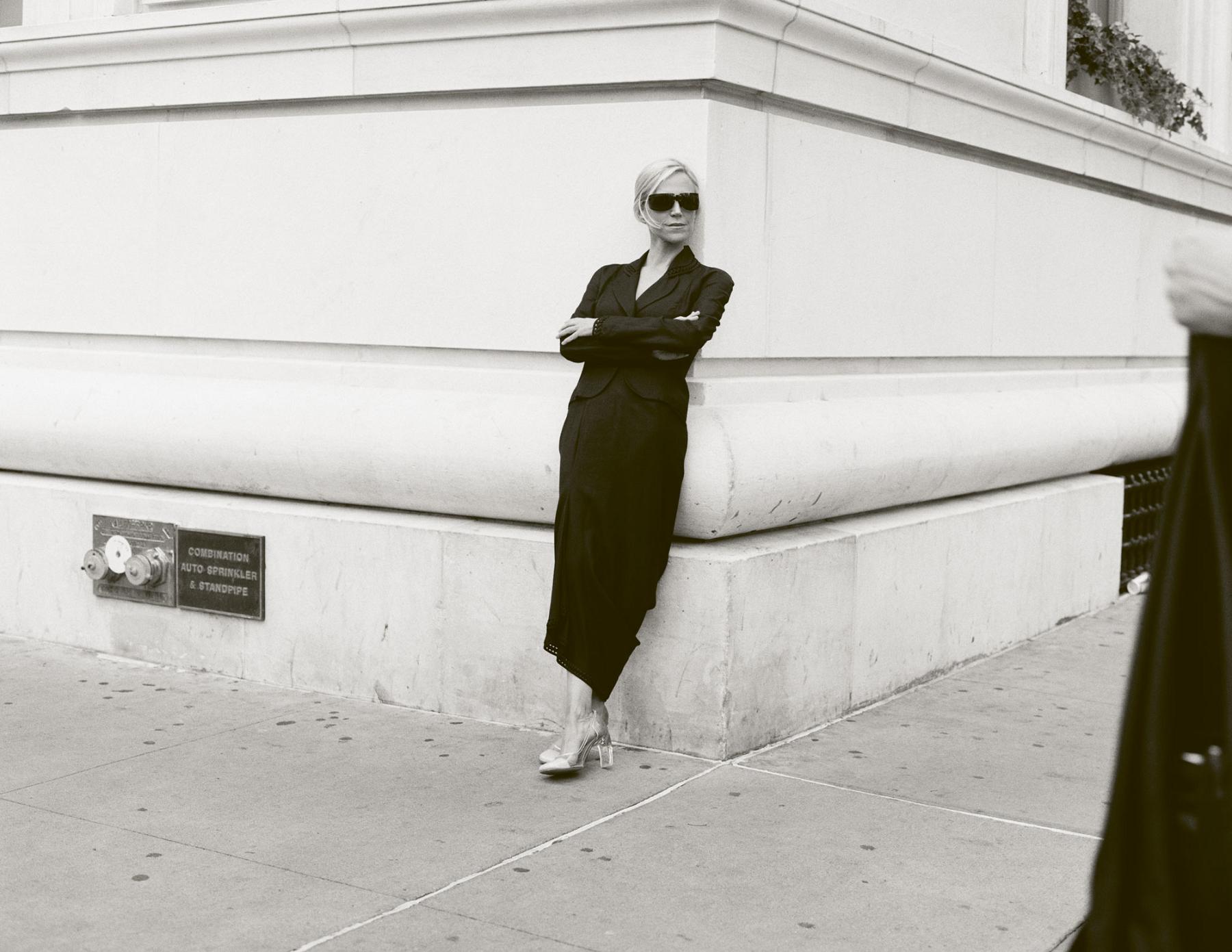
Portraits by Max Farago
Styling by Brian Molloy
Issue nº 30, Autumn and Winter 2024
If it can feel impossible to separate Tory Burch the multi-billion-dollar empire from Tory Burch the person, that’s because they’re one and the same. Once inspired by travel, the incomparable brand-builder “went within” in recent years. The result? The strongest output of her career. Welcome to the Toryssance.
This past Fourth of July, a certain swath of America celebrated its independence at an outlet mall about 80 kilometres north of Manhattan. On that sticky afternoon, customers waited to enter crowded Saint Laurent and Prada boutiques. But the busiest store was Tory Burch, a brand known for its preppy underpinnings and ballet flats; one after the other, women of all ages walked out with a burden of shopping bags. Since the company’s founding in 2004, Tory Burch has emerged, along with the woman who built it, as one of the great success stories in American fashion.
A week before the bank holiday, Tory, 58, is sitting on a cream rug eating prawn dumplings in her eighth-floor office at the Tory Burch headquarters, which occupies five storeys of a building in New York’s Flatiron District. Like her clothes, she is elegant yet unfussy. By her desk, family photos line shelves. In the vibrantly decorated East 61st Street apartment she shares with her husband, Pierre-Yves Roussel, the company’s CEO, she will sometimes discuss business in bed or while brushing her teeth. If it can feel impossible to separate Tory Burch the multi-billion-dollar empire from Tory Burch the person, that’s because they’re one and the same. “Pierre-Yves was at a meeting where someone asked, ‘Does Tory still come into the office?’” she says, laughing. “Who do they think does all this?”
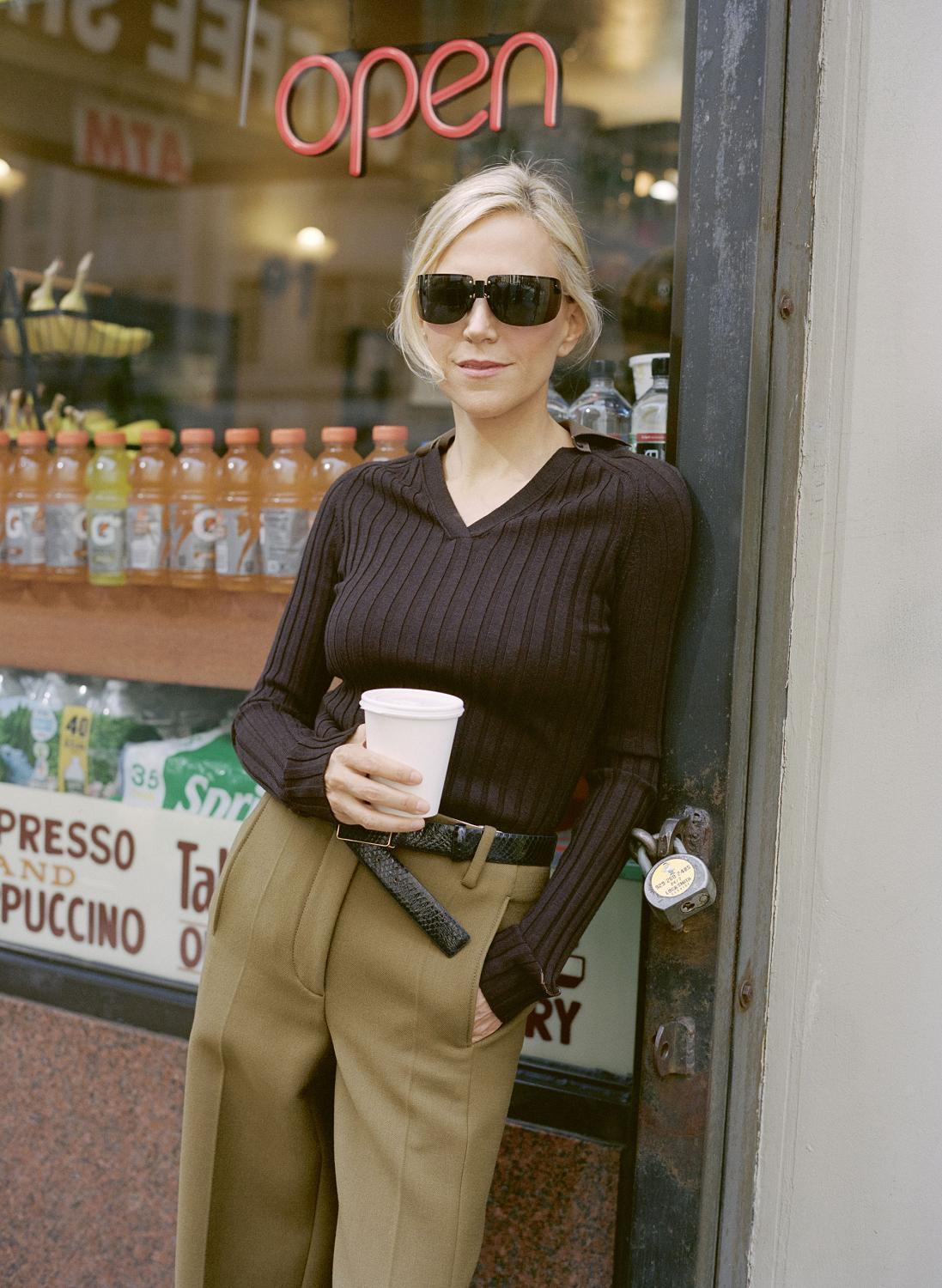
In addition to designing two main ready-to-wear collections a year, Tory runs the Tory Burch Foundation, which offers grants and mentoring to female entrepreneurs; serves on the boards of the Council of Fashion Designers of America (CFDA) and the Smithsonian Institution; and makes time for her three sons (Nick and Henry, both 26, and Sawyer, 23), six stepchildren and two poodles. In 2022, her company, which has more than 380 stores and employs roughly 4,400 people – including Tory’s eldest brother Robert Isen, who is the head of legal and corporate development, and two of her stepdaughters, Pookie and Izzie Burch – sold an estimated $2 billion in clothing and accessories.
Humberto Leon, a co-founder of Opening Ceremony and former co-creative director at Kenzo, who designed a Tory Burch concept store in Los Angeles earlier this year, calls her “a powerhouse of a person”. Thom Browne, the chairman of the CFDA, likens her achievements to Ralph Lauren’s. “She’s built a world,” Browne tells me. “It’s what the best designers do.” Roussel tells me it’s not in his wife’s nature to recognise her accomplishments. Tory herself says, “I just keep going. It’s always about looking forward.”
“Pierre-Yves was at a meeting where someone asked, ‘Does Tory still come into the office?' Who do they think does all this?”
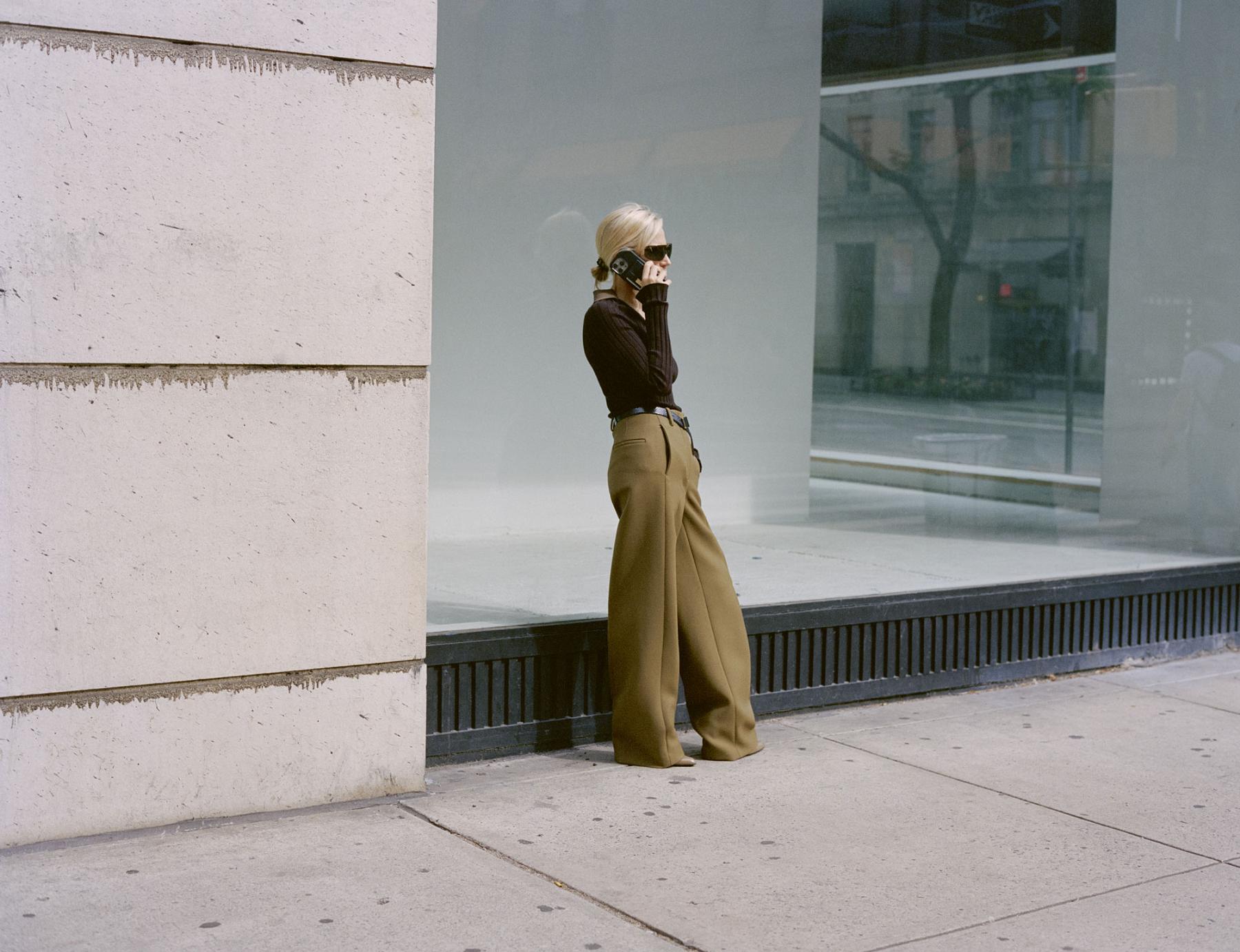
Tory is dressed in a brown ribbed jumper and olive green stretch wool trousers with a plate belt and pierced shoes in soft acorn by Tory Burch for Autumn / Winter 2024. The Runway sunglasses are from the Spring / Summer 2024 collection.
Tory grew up on a farm in Valley Forge, Pennsylvania, about two hours by train – “and a world away,” she says – from New York City. Her mother, Reva Robinson, now 90, was an avid gardener. Her father, Ira Earl Robinson, who died in 2007, used to drive around on his tractor in a pink shirt and custom-made John Lobb loafers. Whenever Tory mentioned her parents to her teachers, she would refer to Buddy, as he was known, as an investor; in truth, they were wealthy eccentrics – or “aesthetes”, as she has come to think of them. Each morning Tory would ask her driver to drop her two blocks away from her Quaker school. At prom she showed up in a Saint Laurent gown with a pink sequinned bodice. Looking back, she says their household, which included two older brothers and an adopted younger one, was like “Andy Warhol meets Robinson Crusoe”. Meals often featured a rotating cast of colourful guests; when their dog handler moved in following a heart attack, he ended up staying six years.
Tory inherited her mother’s free spirit. “I always thought I could do anything,” she says. At 19 she spent a summer at a fish cannery in Alaska; during her third year at the University of Pennsylvania, where she was studying art history, she travelled from Spain to Japan, visiting countries including India, Egypt and China as part of the Semester at Sea programme. “It changed my life,” she says. “I was exposed to things I’d never seen, which included extreme poverty.” She returned home determined to give back.
After graduating, Tory moved to New York to work for the fashion designer Zoran Ladicorbic, whose clients included Lauren Bacall, Jacqueline Kennedy Onassis – and Tory’s mother. Of the many employers she approached, largely art galleries and museums, he was the first who responded. And even though he dressed glamorous women for a living, Tory remembers him saying to her, “No make-up, cut your hair, wear flats.” (When Ladicorbic gave Tory his archive earlier this year, it came with a jagged compliment: “I never would’ve guessed.”)
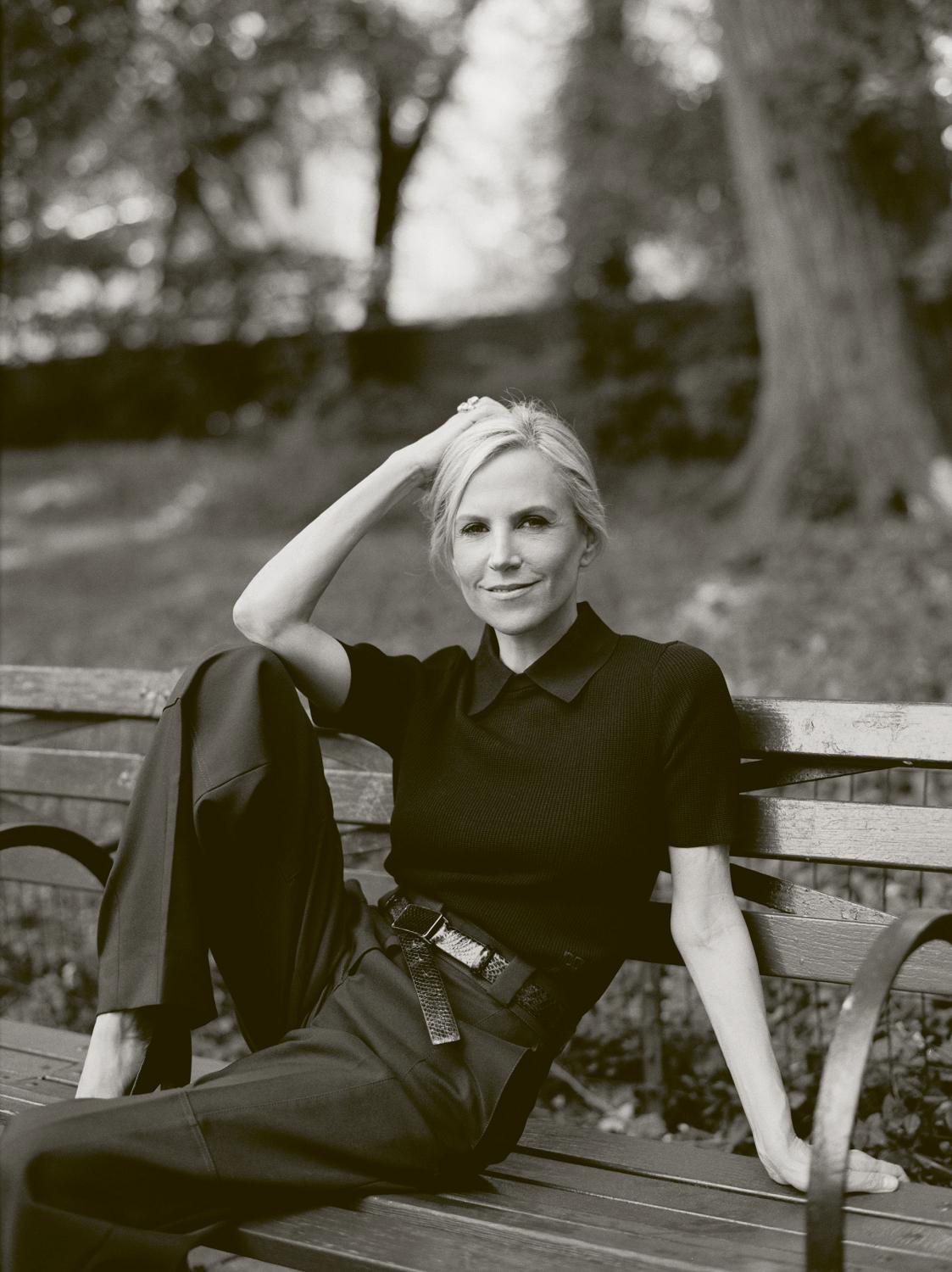
Tory wears a collared black crew-neck top and twill cargo trousers in dark mocha by Tory Burch for Resort 2023. Black plate belt by Tory Burch for Autumn / Winter 2023.
Tory went on to work in the public relations departments at Ralph Lauren, where she ended up as a copywriter, and Vera Wang. “I started slowly falling in love with fashion,” she tells me. She had no formal design training, but Tory knew how to wear clothes. (At university, students described her look as “prock”, a combination of preppy and jock.) After the birth of her twins, and while pregnant with Sawyer, she turned down a promotion at Loewe, where she had been working with the brand’s then creative director, Narciso Rodriguez. That year, 2001, she and her then husband, the entrepreneur J Christopher Burch, relocated to Philadelphia to bring up their children and take care of her father.
“When I took that time off, I heard myself saying, ‘I want to build a global lifestyle brand.’” She and Chris, who would divorce a few years later, pooled their own $2 million to start the business; further financing came from fundraising. (Tory’s advice to prospective contributors: “Invest what you can afford to lose.”) Nine months later, she launched Tory by TRB – “a terrible name,” she says – which became known as Tory Burch. “There was J Crew and Laura Ashley, or Calvin Klein and Ralph Lauren,” Tory says. “In my mind, there was this space that didn’t feel like it was being addressed.” Her mission was to provide well-made, timeless garments that didn’t cost a fortune, and her boldly coloured tunics and blazers – even her geometric logo, a nod to Moroccan architecture – evoked the worldly eclecticism of the British decorator David Hicks and her father, two of her muses.
In 2004 Tory opened her first boutique in a converted furniture store in downtown New York. Her mission proved effective: by the end of that first day almost everything had sold. An appearance on Oprah the following year introduced her to an audience of millions. “It’s hard to define how much she helped us,” Tory says. “Before taping the segment, Oprah told me, ‘Back up your website.’” By 2010 Forbes had named Tory one of the world’s 100 most powerful women. But as the brand grew, she struggled to manage the demands of her two roles. “I was also the CEO of the company, and that’s a very different thing than just being a creative director,” she says. “I’d come in and sort of look at stuff. But it had become more about selling.”
“I was also CEO, and that’s very different than just being a creative director.”
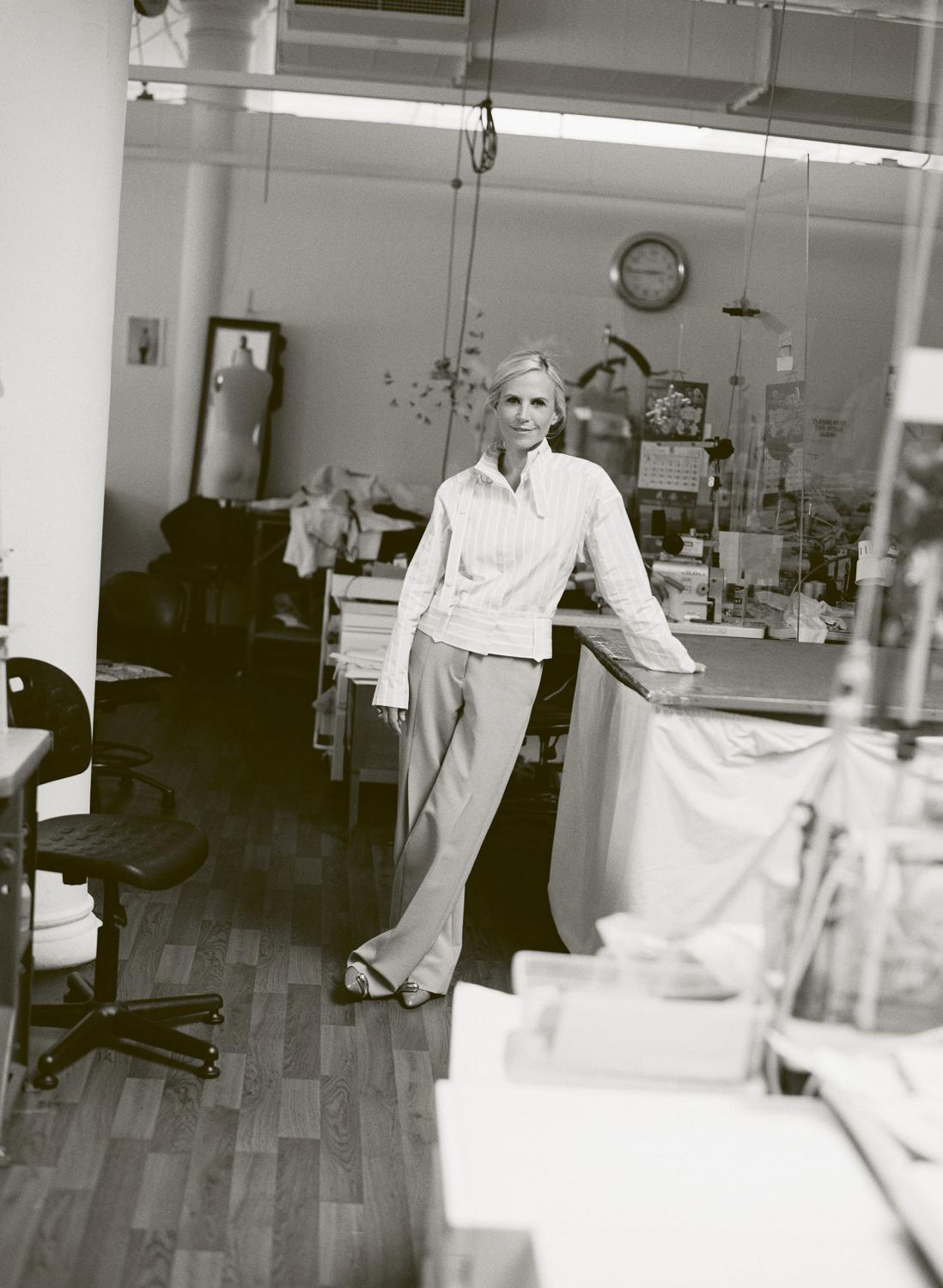
Tory is wearing a striped cotton shirt and tailored trousers with a stitched pleat by Tory Burch for Resort 2025. The pierced shoes are by Tory Burch for Autumn / Winter 2024.
In recent years, Tory has recommitted herself to making clothes. In 2019, a year after she and Roussel, the former chairman and chief executive officer of LVMH Fashion Group, married, she hired him to run the business. (The couple met in 2014 when Roussel initiated a conversation about LVMH acquiring the brand; they reconnected some months later when Tory was being sued by her ex-husband. “I said, ‘The good news is I’m calling to say hello,’” she recalls. “‘The bad news is you’re being deposed.’ He was like, ‘For breakfast?’”) Shortly after Roussel joined the company, Covid-19 brought operations to a halt, and Tory was forced to close 320 stores. The couple left New York and moved into Tory’s country home in Southampton, Long Island, where they created two separate offices. Instead of pulling inspiration from travel, she says, “I went within.”
During that time she delivered some of the strongest and most streamlined work of her career: unadorned cotton voile dresses and simple pleated skirts that evoked the restrained Shaker aesthetic of her classmates at school. “For me, there’s a real before and after,” Roussel tells me about that Spring / Summer 2021 collection. By the time Tory presented her next S / S collection – a modern homage to the early 20th-century American designer Claire McCardell, with plaid and striped cotton dresses – the Toryssance, as some have called it, was in full swing.
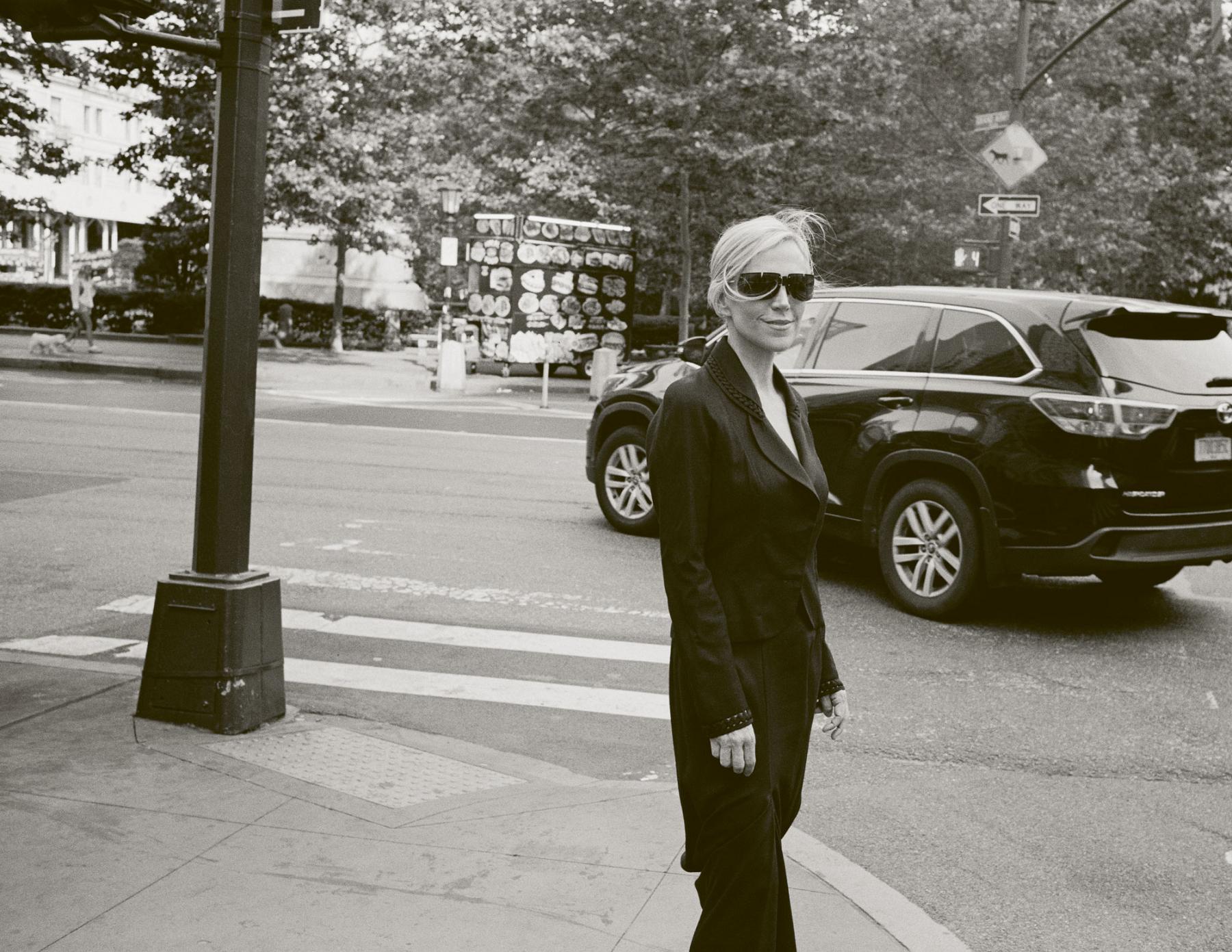
Tory wears a vintage skirt suit by John Galliano with the Runway sunglasses from the Tory Burch Spring / Summer 2024 collection.
Journalists, who hadn’t always been kind, were publishing stories with titles such as “How Tory Burch Made Tory Burch Cool Again”; suddenly her children’s friends and young people on TikTok were paying attention to what she was doing. She dealt with their enthusiasm the same way she handles negative press: by ignoring it. “I didn’t realise I wasn’t cool before,” she says with a shrug.
Two decades into her design career, Tory says, “I feel like I’m just starting the creative journey.” Most days she is still the first person in the office, “and probably the last one to leave.” Earlier in the week she had met the fashion editor Brian Molloy, who styles her shows, at her in-house atelier to discuss some prototypes for the Spring / Summer 2025 collection, which she will present in September at the old Domino Sugar Factory in Brooklyn. Soon she will release a campaign starring Kendall Jenner for her new fragrance, Sublime. But first she is expected at one of her three Manhattan stores to tape a segment for Good Morning America. “I know people don’t really like doing appearances and things like that, but I kind of do like it,” she says. “I’m so honoured that people wear our collections. I’ll never be jaded by that.”
Nick HaramisThe perfectly prolific Canadian-born journalist and magazine supremo is the editor-at-large for T, The New York Times Style Magazine. He is based in Brooklyn with his partner, the designer Misha Kahn, and their dog, Ennui.read more Portraits by
Max FaragoHailing from Providence, Rhode Island, the charming Max Farago stalks the art-fashion divide with his mischievous photographs. A regular contributor to Art Review, his images have been published in The New Yorker, The New York Times, Paris Vogue, Self Service, 032c, and Pop. His work has also been the…read more Styling by
Brian MolloyAccurately praised by an influential industry newsletter as “a stylist who knows how to sell it”, New York-based Brian is famed for his work with clients such as The Row, Tod’s and Tory Burch. read more
Hair: Amanda Scott. Make-up: Berta Camal. Photographic assistance: Nigel HoSang, Mike Sikora. Styling assistance: Katarina Silva, Grace Turner. Production: X2 Production.
This profile was originally published in The Gentlewoman nº 30, Autumn and Winter 2024.